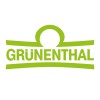Expiration date: 01/2026
Structure and Composition:
Plasters. 1 plaster contains:
lidocaine 700 mg
Excipients: water glycerol (glycerine) was d-sorbitol 70% polyacrylic acid 20% solution (w / w) sodium polyacrylate, sodium carboxymethylcellulose, propylene urea kaolin acid tartaric (tartaric) gelatin, polyvinyl alcohol aluminum digidroksiaminoatsetat disodium edetate methyl parahydroxybenzoate (methyl paraben), propyl parahydroxybenzoate (propylparaben )
Description pharmaceutical form:
The polymer adhesive (sticky) material from white to light yellow in color, with a weak characteristic odor, evenly distributed on one side of the fabric factory indoor and plastic film.
Pharmachologic effect:
Local anesthetic.
Pharmacokinetics:
The amount of absorbed drug is lidocaine (3 ± 2)% of the total, which is part of the plate. Not less than 95% (665 mg), lidocaine is used in the plate. Cmax in the blood - 0.13 ug / ml at 3 overlaying the plasters for 12 hours with plasma proteins Communication -. 50-80%. Distributed rapidly (T1 / 2 distribution phase - 6-9 minutes), first enters the well-perfused tissue, and then - in fat and muscle tissue. It penetrates through the BBB and placental barrier, is secreted in human milk (40% of maternal plasma concentrations). It is metabolized in the liver (90-95%) with microsomal enzymes to form pharmacologically active metabolites. In diseases of the liver metabolic rate decreases and is 50-10% of the normal value. Excreted in the bile and kidneys (up to 10% - unchanged).
In chronic renal failure possible accumulation of metabolites. Acidification of the urine increases the elimination of lidocaine.
Description of the pharmacological actions:
Local anesthetic preparation containing a local anesthetic - lidocaine - acetamide derivative.
It has a membrane stabilizing activity, causes a blockade of sodium channels in excitable neuronal membranes. When applied topically, not irritating to the tissues, at recommended doses has no effect on myocardial contractility and slows AV conduction. When used topically on intact skin occurs therapeutic effect, sufficient to relieve pain, without developing a systemic effect.
Indications:
- pain in vertebral lesions
- myositis
- postherpetic neuralgia.
Contraindications:
- Hypersensitivity to any component of the plate
- violation of the integrity of the skin at the site of the overlay plate.
Application of pregnancy and breastfeeding:
It should not be used during pregnancy and lactation.
Side effect:
Allergic Reactions: Allergic contact dermatitis (redness at the site of application, skin rash, hives, itching), angioedema. Burning at the site of application.
Drug Interactions:
The simultaneous use of antiarrhythmic drugs increase the risk of toxic effects. MAO inhibitors enhance the effect of local anesthetic lidocaine.
Dosage and administration:
Locally. The drug must be glued onto the skin to cover the painful area. After applying the plate to avoid hand contact with the eyes, you should wash your hands immediately. The plate may be on the skin for 12 hours. The plate was then removed and make the 12-hour interval. At the same time you can stick to three plates.
If the period of application of the plate there a burning sensation or redness of the skin, it must be removed and not be used until redness disappears.
Used plasters should not be accessible to children or pets. Immediately after the application of the plate should be destroyed.
Overdose:
Symptoms: increased sweating, pale skin, dizziness, headache, blurred vision, tinnitus, diplopia, decreased blood pressure, bradycardia, arrhythmia, drowsiness, vomiting, numbness, tremors, anxiety, agitation, seizures, methemoglobinemia, cardiac arrest.
Treatment: at the first signs of intoxication (dizziness, nausea, vomiting, euphoria) further use is stopped, the patient is transferred to a horizontal position prescribed oxygen inhalation with bradycardia - m-holinoblokatory (atropine), vasoconstrictors (norepinephrine, phenylephrine).
Special instructions:
Used with caution in local infection at the site of the overlay, an injury at the site of application, in acute diseases, debilitated patients, in children under 2 years of age and in elderly patients.


